As the late Dr. Sean Stephenson liked to say: life doesn’t happen to you; it happens for you.
My guest on today’s show, Draye Redfern, had more than his fair share of intense physical, emotional, and financial struggles to overcome. This episode is an inspiring testament to learning from your challenges and pushing through even the most difficult times to chart your own course to success.
Draye is the founder of the marketing agency Redfern Media, the fractional CMO firm fractionalcmo.com, the financial advisor’s consultancy Ultimate Advisor Coaching, and the cargo bike company for families in urban cities called bikecar.com. And those are just the companies he currently owns. He’s a prolific entrepreneur, to say the least. He’s been featured in Psychology Today, Forbes, Inc Magazine, and the Huffington Post.
In this episode, Draye shares the backstory of his seemingly insurmountable struggles. How he was able to overcome those struggles and succeed is a testament to his unshakeable faith and resolve. One of his many secrets to success was being subjected to listening to his dad’s Zig Ziglar, Tony Robbins, and Earl Nightingale tapes daily during long school commutes. At the time, it was incredibly annoying. But those recordings seeped into his consciousness and created quite a motivational and entrepreneurial imprint on his brain!
Draye has many more inspirational anecdotes and powerful insights to share with you, so stay tuned! Now, on with the show!
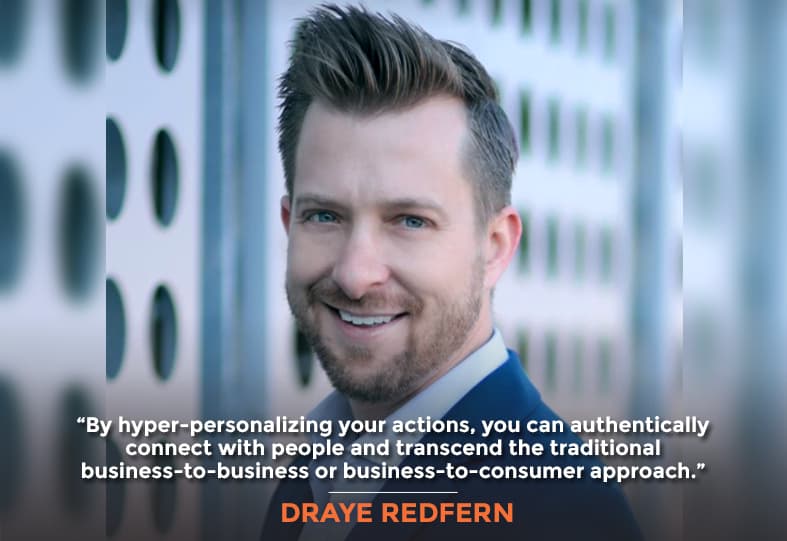
In This Episode
- [02:43] Draye Redfern, the founder of the marketing agency Redfern Media, shares the turning point of his racing career to becoming an entrepreneur.
- [13:46] What makes masterminds valuable, especially the Genius Network?
- [17:01] Stephan and Draye elaborate on the concept of resilience and anti-fragile.
- [23:45] Draye explains his marketing strategies and campaigns for Benjamin Hardy.
- [29:04] How to increase conversion rates in a saturated market.
- [31:03] The power of customization and personalization of your marketing.
- [38:18] Draye offers an out-of-the-box marketing strategy we should incorporate.
- [41:21] Top three people who stand out in the industry. Draye also shares how you can differentiate yourself from the competition.
- [43:26] The practical applications of AI tools, specifically ChatGPT.
Draye, it’s so great to have you on the show.
I’m excited to be here and jump into some fun stuff together.
I enjoy our conversation. We know each other through Genius Network, Joe Polish’s mastermind, a great group of people. I’m so happy you’re just one of those great people.
We’ve all had our night of the soul. I don’t know how personal you want to get. If you’re going to share how your origin story has impacted your businesses, your mission, the strategies you employ, and how you can scale and have efficiencies, I’d be happy to start there if you want.
I was going to be a professional cyclist. I have done racing all over the US. I’m getting paid to ride my bike, the coolest thing in the world. I did some racing in Italy.
Long story short, I had heart surgery at the age of 19, which shattered my entire professional career. They prescribed beta blockers for my condition, which was bradycardia-tachycardia syndrome. My heart rate was going fast when it shouldn’t and slow when it should.
At the end of the day, what they were prescribing was making me worse month after month. All it took was an even higher level of supplementation than I was already doing. I couldn’t have maintained my pro status and not had to have heart surgery.
Stand up for your principles and beliefs — this is a vital aspect of successful marketing things. Share on XI found out later that the anesthesiologist we had requested and a friend of the family told us over glasses of wine that I went code blue on the operating table, which means flatline. It was not supposed to happen. The 90-minute procedure took five hours, which was one reason why.
After a short period of pharmaceutical-grade vitamin supplements, I got my pro card back. I started racing at that level again. Six months later, I was riding my bike and was T-boned by a 17-year-old kid texting while driving. The bike got sucked underneath the car, and I went over the car, landed fifteen feet on the opposite side, and had internal bleeding, neck and back injuries, and so many things for about three years.
I didn’t need the third time to be the charm that would permanently take me out of the game and out of life. I’m like, “Let me pursue business.” After several years, I co-owned another one, but I started one of my own companies.

On January 2nd, 2015, I bought the ring for my soon-to-be fiance, now wife. Thirteen days later, my wife, a world-renowned wedding photographer, shattered her entire business at ten thirty-two in the evening on January 15th, 2015. Someone made up a whole bunch of lies, went to the news, and ran a story saying that my wife was holding their images hostage, like my wife is a terrorist.
This person was a blogger, had a decently large social media following, and completely disparaged her all over the Internet for what we found out later in a lawsuit— it was for her gain to garner advertising revenue, clicks, and everything else. What they didn’t figure was that we would fight back.
The following week, we put an open letter out there. This is how viral our story went in the early days. That open letter was read 1.2 million times in 48 hours in 195 countries.
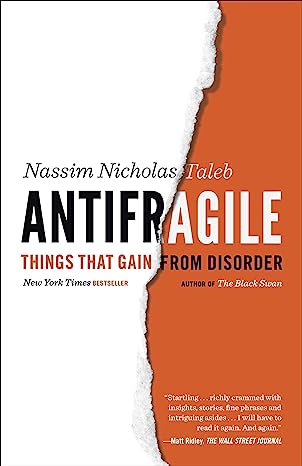
Fast-forward three years of fighting this lawsuit after a $5000 retainer, we burned through shy of $400,000 that we had in savings, on our way to spending a million dollars fighting a lawsuit. As we got to the end of it, it’s a whole other rabbit hole we can go into as far as the first amendment, free speech protections, and all of these things, which is great, but there are limits to what you can say like you can’t scream fire in a movie theater.
I had about $500,000 on my credit cards, mostly on my AmEx at 20% interest. Every year, the interest was $100,000, and I couldn’t pay it because of how my business was going and y wife had no income anymore.
Dealing with heart issues, getting hit by a car, trying to build businesses, and having a massive debt to fund a lawsuit, my first six to eight years of entrepreneurship were awful. It’s those scars that you learn from, and you take a lot away from them that made me who I am today.
We had a week-long jury trial and won $1.08 million. Having spent a million dollars, so not a financial win. However, the following week, our story got 400 million impressions because it was the first instance of a business being disparaged with negative reviews and fabrication, defamation, and fighting back and winning because there are free speech protections.
It was the first lawsuit setting case law and precedent across the US that changed the tide with much of this. Many businesses can relate to that because I’ve had a negative review, or the way that they said it happened on this review online is it wasn’t how it occurred.
Most of the time, you can’t do anything about it. In our case, we could because you have to prove the damages. It was just a variety of things that one thing led to another. Good Morning America, USA Today, and CNN, it’s 400 million impressions and things my wife was on with all of this stuff.
That was one of the culminating moments of looking back and entrepreneurship going like this. I had to figure all these things out. I had employees I had to rely on. I needed to dial more things in my life and figure out what I realized, and I had to do it faster because I had a gun to my head with massive amounts of debt crushing me and a business that couldn’t support it. That’s how it all started.
From there, I joined Genius Network in the middle of all that. I said, “What’s another $25,000 when I’m $500,000 in the hole?” I ended up meeting Jay Abraham from that. I helped him with some stuff and met my now longtime friend and client, Dr. Benjamin Hardy. We’ve run all his marketing and sales for the last six years.
I met some high-level people who became a catalyst and a launching pad to go on and make millions of dollars for ourselves and our clients and take things to the next level, both for my wife and my family. Now we operate four companies. I live a life I couldn’t have imagined three, four, or five years ago and employ dozens of people.
You always have options: fight, flight, or freeze.
It’s become one of these things where, had I not had those experiences, I probably would not be in this position. It’s like the old Sean Stephenson quote, “It doesn’t happen to you, it happens for you.” The lessons you learn from that period and having those experiences have gone a long way to provide perspective and insight on a variety of things.
Wow, what a journey. Thank you for being so vulnerable and open about what you experienced. You were backed into a corner in some respects.
You always have options. There’s fight, flight, or freeze. When dealing with very stressful situations, most people will probably freeze. They don’t know what to do. Analysis paralysis kicks in, so they don’t do anything.
I come from fifteen years of insurance and risk management experience. It was a matter of taking all of the situations or perspectives and taking a pause on it, looking at the options and like, “We’re going to fight.” You can respond or react; most people react without thinking through too many different things. We chose to respond and fight.
Standing up for principles and things you believe in is important, no matter where you’re at, how much you make, what your business is, or what you believe in. It’s one of those things that if you know what those are and doing the right thing is important to you, then figuring out how to piece it together is what it comes down to.
The difficult things are what make people.
It goes so far beyond just making lemonade out of lemons. It’s seeing the blessing in these challenges, disguised or unrevealed blessings. That’s been something that, in our conversations, I’ve been impressed by. You see a bigger picture.
You get knocked down enough and keep telling yourself, “I will get back up. I’m just going to keep giving it a shot.” You don’t realize it, but in hindsight, when the smoke is clear, it gives you a bigger picture. The difficult things are what make people.
The most successful people I know have been dealt an awful set of cards in their life across multiple things, whether family issues, being victims of various things, having addictions, or having awful things happen to them, but they persevere through it. You have a level of resilience with which you tackle things.
That changes a lot of perspective when you look back. To say the Sean Stephenson thing again, “It doesn’t happen to you. It happens to you.” That perspective goes a long way.
I had Sean Stephenson on my Get Yourself Optimized podcast. Amazing soul. If you could wave a magic wand and change anything about what has happened to you over these years, would you change anything?

I don’t know if I would. At the moment, change it, take it away, or make it go away. But looking back, it all brought me to my current position. Last year, I co-owned an insurance company. We had 8,700 law firms insured when we sold it, and we sold it to the Berkshire Hathaway companies.
This year, I’ve exited one of my consulting companies. I still have four more, like picking a card. Even in each of those experiences and trying to sell a business, I relied on something that I learned ten to fifteen years before when it came to something completely unrelated to negotiating things or how you frame something.
It’s not any one thing. You combine all these ideas, concepts, and experiences into who you are. It may be fun to try and relive that differently, but I don’t know if I would change anything.
The most successful people I know have been dealt an awful set of cards in their life across multiple things, but they persevere through it.
That’s a very wise perspective. What gave you the insight that you knew you had to join Genius Network then? That’s another big expense when you least need it, but you know somehow that this is an investment that will pay dividends. It’s an essential part of my path. How did you know?
These are one of the things I was conversing with my wife. It’s funny because we had about a twenty-minute ride to school growing up. Every day, my dad, a business owner and entrepreneur, would play Zig Ziglar, Tony Robbins, and Earl Nightingale.
As a school kid, I’m like, “Dad, I don’t want to listen to this. This is awful.” He completely disregarded everything that I and my younger siblings said because I’m number four of seven children. He played anyway. He wouldn’t care.
It wasn’t until the last five years that I realized the amount of psychological imprints I had from that period that instilled a sense of resilience, perspective, and insights that the normal person probably wouldn’t have. Looking back, it’s one of the coolest things.
Now I want to try to give it to my kids. It’s one of these things that I want to give back in a sense, seeing what that personal and self-development looks like, not just today in the psychological changes you can make over the years. Things like that gave the perspective and insight changes into everything.
It’s an indirect way of answering your question, but that would be one of the things that I’ve looked back on. It’s one of the greatest advantages I was given that many others were not. It was having that knowledge or skill set to deal with extremely difficult times from a young age.
Is there one particular speaker, tape, CD, or book?
That was Awaken the Giant Within. I got involved in much of the Tony Robbins stuff in my early 20s. That was how I met Joe Polish. We met in 2014 at the Date With Destiny in Florida. That’s the one that the documentary was made into. We met there.
That was a great documentary, too.
Yeah. You can see my crazy hair, glasses, and Joe’s bald head in several shots. Within the next week, I was in Genius Network. Having those imprints from a young age and listening to Tony Robbins put me in the position to be around Joe, which put me in a position to be around many other high-level people.
One thing leads to another. Circling back to what you said, if I could go back and change it, I don’t know that I would because that missing piece could be the domino that a lot of these other things keep flowing together.
Do you buy into the philosophy that these relationships, epiphanies and milestones in your life were predetermined?
My wife would, and I ebb and flow on it. I grew up in a private Catholic school for most of my upbringing and all the guilt to go with it. I’ve dealt with that and all of the other things. I would agree with that, yes.
You mentioned resilience. I want to bring up a concept that has made a difference in my life. It’s antifragile, which is so much different and more evolved or impactful than resilience. Are you familiar with the book Antifragile?
You combine all your ideas, concepts, and experiences into who you truly are.
Yeah, Nassim Taleb. Great book.
He discusses economies, immune systems, mother nature, and various anti-fragile things. I thought, “Well, my personality and character can be anti-fragile. If I’m not just resilient, I’m antifragile.” That means I’m growing, blossoming, and evolving through these challenges. The stressors make me stronger.
I agree 100%. I’m writing a new book about the interesting things happening in the world that could go down that rabbit hole called the Recession Survival Guide. I have a whole section dedicated to antifragility. It’s something I resonate a lot with.
I don’t want to sound like an older man, but it’s like, “When I was your age—” I have younger employees. There’s a certain element of that that is missing. I’m a huge fan of Nassim Taleb, the books, and his thinking.
Very cool. Another book that my wife, Orion and I are getting through is Be Your Future Self Now by Benjamin Hardy. That is a great book and a great concept. I’d like to hear if you’ve gotten any insights from that book, generally from Ben working with him and having him as a client.
We took our fourteen-year-old daughter to dinner last night, and we were having very advanced psychology conversations with her about stuff Ben talks about in Be Your Future Self Now, and the newer book, 10X Is Easier Than 2X.
To her, Ben is just a normal person because he comes to our house several times a year. He stays with us. We whiteboard the next webinar or whatever the thing is on this massive whiteboard behind me. Being around him and watching him flush out ideas, months, sometimes years before they’re publicly known or discussed, is one of the coolest things about knowing and being around Ben.
He’s pushing the psychology world and the research around it in a way that no one else is. You’ve got your Carol Dweck out there that has been a longtime growth mindset, and he’s got some of these other people out there who have been the space’s figureheads. But Ben truly is the pioneer around the future self.
If you live by your future self and live from what your future self would do, then you and your present can change who you are today based on what your future self would do.
The science around it is so freaking cool because it’s nothing against therapy. I think therapy helps many people, but most therapy is, “I’m here in the present. I will relive the past to give it meaning so I can feel better or get over whatever I’m dealing with in the present.” I don’t want to disappoint or downgrade anyone’s experiences because some people have very traumatic things.
What that causes is you live in your past, even now in your present. This happened to me, and that’s the type of person I am. Your present dictates your past. “This is who I am, which was dictated because this happened in my past.” You live in this almost negative feedback loop that many people get stuck in.
Instead, if you live by your future self and live from what your future self would do, then you and your present can change who you are today based on what your future self would do. The easiest example you can do or embody with is, especially if you have kids, what would your 80-year-old self do, give, or pay to come back to this moment right now when you’re playing with your kids, you’re rolling around and wrestling with them, and you’re teaching them to live in that moment again?
How many millions of dollars would you give up? How much notoriety, the accolades, or the this or that would you give up to return to that moment? That gives so much perspective because you were busy running companies and doing different things. You got Slack messages, pings, and rings. You get pulled in a thousand different avenues, and having that simple shift makes it so much greater to live your present daily life knowing what your future self could do and what it would mean to them, and then you make decisions today based on who that person is.
If I wanted to be shredded on a bodybuilding stage, and that was my future self, how would I make decisions today that would allow me to do that? That becomes the frame from which you can then make decisions. I’ve got young kids, so I prefer the kids’ one. But it’s one of these things that changes your whole dynamic of how you view things, the perspective, and the way you live your life.
I’m incredibly grateful for being around Ben and that type of thinking. My wife, kids, and I all live with more of our future selves than we ever did. I can’t recommend that book enough. It’s a great one.
Yeah, that’s super cool. One exercise I do is to have this top of my mind as much as possible. I can’t say I do it daily, but I do often. I learned this, or I don’t know where I got the inspiration or intuition to practice before the future self book emerged. This is me imagining what it would be like to experience my life review after I pass back into non-physical.
My body has died. I’m reviewing my life. “What did I do at this moment? Am I happy I did that? Would I have more foresight, insight, or responsibility instead of reactivity?” But I’ve done it differently.
When you learn to enhance humanized automation and foster genuine personal connections, you stand out from the crowd. Share on XI have one foot on the other side of the veil and one foot here. I’m like, “Okay, am I living my best life doing the right thing, making the right choices now? How will watching this in my life with you feel to me? “
It’s a good perspective. I like it.
One thing I heard at the Genius Network meeting I joined via Zoom is that Dr. Bob Cialdini, on the panel, is talking about not congratulating the person’s progress, even though that sounds like a good thing to do because that gets them looking backward at where they came from and where they are now. Congratulate them on their commitment. I love that. That was just a gold nugget.
It’s acknowledging the effort they put in. Where they’ve come from, but it’s future pacing them to keep that level of commitment over a longer period into the future instead of just recognizing the past—a very awesome way of framing it.
We must live with more of our future selves than we ever did.
And that relates to this whole future self-discussion. Let’s talk about marketing to Ben. You’ve done some incredible things for him. I’d love to hear it, and I know our listeners will be inspired by what you’ve done for Ben.
I’ve always been a behind-the-scenes guy across the companies and the people we’ve worked with, and Ben is a very front-of-stage person, which is great. We work well together.
When I met Ben, it was his very first Genius Network meeting. He was the number one writer on medium.com, getting about 30,000 email opt-ins a month. This is all stuff that he said publicly. The previous year, he had made $67,000, which is not bad money, but it’s not great when you’ve got expenses in software and all of the other things you have to do when trying to get an online business going.
I asked him, and this is something that I’ve wholeheartedly believed, just give first because there are so many things that come out of it, is that “Well, how are you monetizing all of these 30,000 people a month to the tune of 380,000 people were on the email list?” He goes, “Well, I’m not. I got this.”
I built a simple funnel that made him $10,000 a month passively. After three to four months, he said, “What else can you do?” Because it was a $27 offer. It was a throwaway offer thing.
We ended up pushing him. I helped to get him his first assistant. I was behind the scenes with much of what it has become on the coaching side regarding the structure of things. He has an app program called the Accelerated Momentum Program and multiple levels of that.
It was gold, which is $1000 a year, and platinum, which is $20,000 annually. It is the highest-level coaching and accountability program out there. I don’t think any other program I’ve had access to a lot, and I’ve helped many people. Nothing has been as high-level accountabilities, that is.
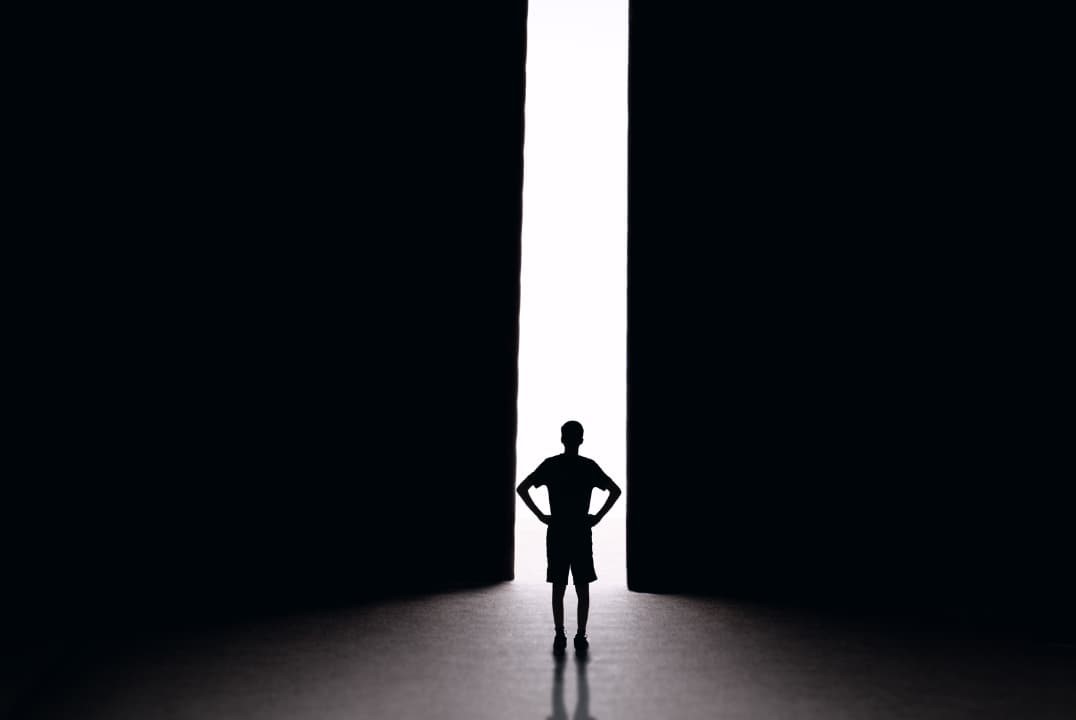
What we’ve done with that is he’s got an email list, so you can utilize that some people don’t have. The interesting thing that has set apart or differentiated all of these things is if you’re selling a course or a product, you got to know the avatar.
We can make fun of multiple companies recently, like Bud Light, where the avatar mix has been an issue. Even the big boys forget this. But if you know the avatar, and you got to figure it out, how do you take an offer and make it something that is not just a ‘hell yes’ offer, but something that is like, “I’m an absolute idiot if I don’t take advantage of this,” and then find a way to reverse that risk and whatever form or capacity that is.
With Ben, for the AMP-GOLD offer, it was spent $1000 for the year. If you do all of the assignments and things that I tell you that you should do, and you get to the end of the year, and you radically can show the proof that you’ve transformed your life, then I will give you your money back, and I will give you an extra $1000. Meaning I will pay you, I will double your money for you to transform your life. People went nuts for that.
You had to refund some people because they killed it over the year. After all, that’s what it was attended upon, and then you offload the front end of the risk reversal with a thirty-day money-back guarantee and all that sort of stuff. But it’s things like that, just taking a unique spin. Even refunded people said, “Hey, I don’t want my money. I want to do it again for another year because my life is so much different now than it was previously.” Those people go on and then eventually join the $20,000-a-year program.
If you’re selling a course or a product, you have to know the avatar.
It’s just taking simple things in what you’re doing in your marketing and finding unique ways to adjust small knobs that can have a big impact. It’s like the saying, “Small hinges swing big doors.” It’s so accurate with so many people’s marketing and how they view it that you might be on the verge of something massive, but a few small tweaks can take it to the next level.
How many people did Ben end up refunding because they crushed their goals with the AMP-GOLD program?
At this point, there’s been somewhere in the vicinity of 5000 people that have been through that program. Maybe somewhere between 30 to 60 ended up wanting the refund because naturally, the natural attrition and human tendency is, “I do it for a month, then I lose my steam.” You see how many people try to do it, and they can’t get past ten days. It’s a natural human tendency.
I think that even the people that didn’t want their money back on, who didn’t qualify to get their money back, or who didn’t request it, thousands of testimonials and reviews of people that had completely radically transformed their life.
That’s the cool stuff to make and build because we can build a marketing funnel, sell a product, sell a tchotchke, get all of these things done, but you’ll actually see the transformation of someone who wanted to lose 100 pounds, and then they did, freaking incredible. Or someone who was dead broke, and then suddenly, within 2½ years, they’ve got a seven-figure business—example after example.
It’s freaking cool to be around and see people implementing and taking their life to the next level. It’s one of the more rewarding elements of being in the marketing space and doing many of the behind works.
What’s working now? Times have changed a lot. You don’t hear much talk these days about webinars or challenges. Have these things jumped the shark, or are they just part of all marketing programs now, so we’re just not talking about podcasting and all of that?
Witnessing people implementing and elevating their lives to the next level is incredibly rewarding.
Everything is so much more saturated than it was even two years ago. Nothing of the stuff you just mentioned is as effective as it was. Ben, with our recent launch for him, still did a webinar because it’s very difficult to get high-level psychology concepts into a five-minute VSL. You can’t do it.
But after the webinar, you can see where the drop-off rates are, etc. It’s something if you’re doing a webinar that I’d recommend. It then has a five- to eight-minute version of the webinars. Same slides, but you’re skipping a lot of it. You’re only hitting the high points you can send after the fact, almost like a VSL with the book, a call button, or these sorts of things.
It reinforces a decision they already made to join the webinar. Everything is branded the same, and you’re like, here’s the CliffNotes version. Because in the super ADD society that we live in, people want everything now. I want Amazon Prime. I’ll order it this morning, and I want it this afternoon. This instant gratification dopamine hits that we have, and sometimes you got to play to that.
You want to have the higher level educational elements, but you can find ways to take consolidated versions of it after the fact in follow-up sequences. You can bump your conversion rates up a lot that way. That’s one element.
I think that one of the things that I’ve been closely tracking over the last year is when the definition of recession just magically changed because no one wanted to say that we were in a recession, is that I think we’re bound for something that’s going to be very negative. That could be this year or next year. On average, recessions happen about every seven to ten years. It depends on how far back to go and what the average looks like.
As this goes on, the large-scale automated webinars will lose their zest faster than ever. Since the definition changed last year, I said, “I’ve got to figure out a way to help people with this.”
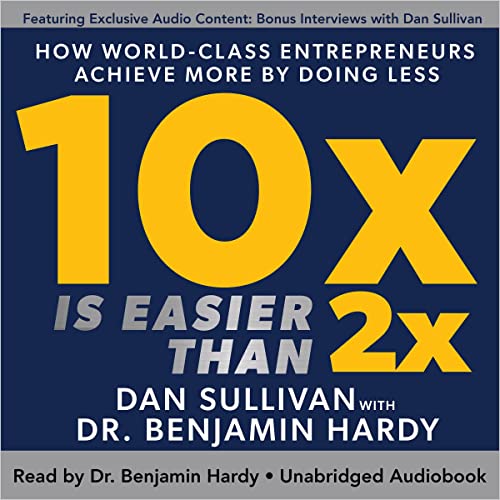
I spent the last six months writing a book called The Recession Survival Guide. One of the things that I truly believe will be one of the differentiating factors of businesses who, as more people come into space, technology and AI get crazier. It’s finding ways to hyper-personalize your actions to bring people in and have a genuine human-to-human connection. Not business-to-business and not business-to-consumer, but human-to-human.
You can do that through handwritten notes. You can do that through customized videos where I’m saying, “Hey, Bill, Draye Redfern here.” “Hey, Susan, Draye Redfield.” You could do that at scale by saying particular things and calling them out by name.
In December, we sent 3000 handwritten notes. We used the company to help out with that. If you have a higher ticket offer that you’re selling for over a couple of thousand dollars, it doesn’t take much effort to make a custom sales page addressing that person by name.
If someone’s coming in by the name of Jill, you could clone a ClickFunnels page or a WordPress page, change the URL slug to include their name, put their name at the top of the page, and then film a two-minute video that’s like, “Hey, Jill, Draye Redfern here. Listen, I’m so glad we’re going to work together. I enjoyed that you shared X, Y, and Z. I look forward to doing A, B, and C. This is the next step to move forward. The contract is below this video,” or whatever your process would be.
That blows people away because it shows two things. Number one, what it’s like to work with you. Whether you’re a financial advisor, an accountant, or selling a marketing service, what is it like to work with you because you’re setting expectations very high from the start? Most other people wouldn’t. That’s part one.
In that video, it shows that you’re listening to them. So many other people are just like, “Give me your money.” Repeat back to them using their name. Dale Carnegie said a hundred years ago how to win friends and influence people, the sweetest sound to someone’s ears is the sound of their name.
Discovering unique ways to improve even the smallest elements in your marketing can yield significant impacts. Share on XYou’re using it on the page, URL, or video, and people go nuts for it. You’re repeating to them what they said and what their concerns were. You can address them and their concerns in a very customized and personalized. It feels more human. It feels more genuine.
Now you can’t address all the concerns of 10,000 different people on a sales page like that, but you can do that in various other capacities. For a campaign we just did a few months ago, we had a thousand custom videos that we did saying each person’s name, addressing each of them in this campaign one by one at a thousand.
It took about a day to get through—process and work some of the code to do it—but these are the things that people are going wild for. I think that’s one of the things that we’ll see a lot more of in the next year as people hold on to their pinching pennies a little bit more and hold on to the pocketbook a little bit more tightly, being a little bit more considerate of where they’re spending their money. Finding unique ways where you can differentiate like that, it’s going to go a long way than it ever has before.
Are you familiar with the tool Descript? Do you use that to customize videos or audio?
We’ve done it. I had my team custom-write code for two seconds across a series of names, automatically pull those out, and then plug it in. We have their name that comes across the screen at the same time.
We hard-coded and custom-made that. We started with Descript. It was a great place that we started with. My team’s famous last words are, “What if we can also,” and then they’re like, “Draye, stop.”
Awesome. What conversion rate differences do you get sending something custom as a video or handwritten note instead of a regular direct mail piece? How much does that bump up the conversion rate?
Two times minimum, usually. If you send a regular piece of direct mail, you’ll get about a 2% response rate if you do decently. If you send a handwritten note, most of the stuff we send will be about 5%. If you’re sending some video in the mail, like a printed video or something along those lines, getting north of 10% is not uncommon, but it costs a lot more.
Address your clients’ concerns with highly customized and personalized solutions to create a genuine, personalized connection. Share on XIf you’re doing it on a personalized sales page like that, we structure it because we’ve got credibility. We’ve helped Shark Tank and Ben Hardy, and we stack it with testimony.
Our page converts at 84%. We’ve had an initial conversation with someone, whether it was an initial proposal, they want an idea, or to kick the can around.
If you compare that to just sending a PDF proposal via email, you’re in the double digits just doing it that way. Taking the traditional things and just taking a slight spin on them, we’re used to getting significantly higher results than you’d probably be used to.
That’s awesome. Are you using handwrytten.com?
Yeah, we’ve used them a lot. I bought a handwriting printer before we sold the previous business last year. You insert your Mont Blanc, Uniball, or whatever you want to, and it would digitally writes the thing for you. You’d see the ink bleeds and all that stuff.
We use Ghostwriter. It’s $10,000–$12,000 for it. But if you’re going to do more than a couple of hundred or a couple of thousand over the year, it more than pays for itself. It’s a very cool technology that you can use to take personalization to the next level.
That’s awesome. How did you get the idea to get a machine like that?
I told myself probably about ten years ago—because we had a part of our process where every new client would get a hand-signed letter in the mail—I was like, there has to be a better way to do this. I just spent a lot of research and time doing it ten to twelve years ago. I was like, “Holy smokes, this exists.” We went through them back and forth and eventually bought the thing.
In that business, we had 8,700 law firms insured. That’s 8,700 letters at a minimum every year, not to mention thank yous or all the other stuff you want to send. It made sense at a scale like that to do it. But even if it didn’t, at $10,000, even trying it out would be worth the time to see it, even if it didn’t work, but it did. The technology has gotten even better over the last decade.
Now you can get it done in various services for a few bucks. You can implement that with Zapier and tie it into various things in your Customer Relationship Management (CRM). On this day, trigger a handwritten happy birthday card to be sent out with this message with a mail merge field of XYZ that you can pull from the CRM.
There is some cool stuff to make people feel like, “Holy smokes. They’re paying attention to me.” Most of that can be automated. You hide it better than you could a few years ago.
That’s awesome. What are some of the other out-of-the-box marketing strategies or tactics you don’t normally hear about but have incorporated into your clients’ marketing?
The human element. You’re just one funnel away from all the marketing stuff and automate everything. However, there’s still an element of the human element that makes everything pop significantly bigger and greater.
We run sales. My sales teams run a variety of companies’ sales for them. For Ben, my sales team is selling his high-ticket programs. Whether it’s him or any of the other clients we’ve worked with, one of the best elements that work is just picking up the phone and calling someone when they take some action, and they’re not anticipating it.
You buy a book. Within ninety seconds, you’re getting a phone call from someone on that team saying, “Hey, this is Bill from XYZ. I want to thank you for a copy of the book. You’re probably watching some of the other videos you’re going through. If that’s the case, great, enjoy those. You should have my direct lines with anything else that you need so we can support you here at XYZ company. We’ve got you covered.”
Taking the traditional things and a slight spin on them gives us significantly higher results than you’d be used to.
They probably will not answer the phone because most people don’t, but they’re going to look down, and they’re going to see the transcription of that video or voicemail. They’re going to listen to the voice. You’re not going to get a whole lot of callbacks, and that’s okay. But the buy rate that so many people have after that is huge because you’re setting the expectation at the front end of the relationship that, “Man, these people do things differently.”
Yeah, it’s remarkable. It’s worthy of remark.
Exactly. There are so many things like that. You could trigger like when a Stripe code gets sent into a Google spreadsheet that sends you a notification, a popup, or whatever else this person has to dial in. It’s little things like that go a long way.
It’s pre-calls before a sales call saying, “Hey, this is so and so from a particular company. I’m ensuring you’re good for your call with Daniel. Is there anything you want Daniel to ensure he’s prepped with beforehand?” They will tell you some of those objections before Daniel gets on the call with them.
There are finding ways to insert more of that human element because we all have fears, concerns, and objections to whatever it is. But if you can up what we call humanization automation, and human-to-human feeling, you can truly differentiate yourself from what everyone else is doing.
It’s ad to a webinar, sales page, upsell, and down-sell. You’ll never talk to a human. You’ll never be able to submit a support request to a human. That’s the world we live in right now. The bar is set so low that it’s not difficult to have some amazing moments that truly wow people.
Who’s a standout example? Maybe even not a client of yours, but somebody that you just really impressed with their human-to-human interactions, the way they’ve done their video sales letters, their webinar funnel.
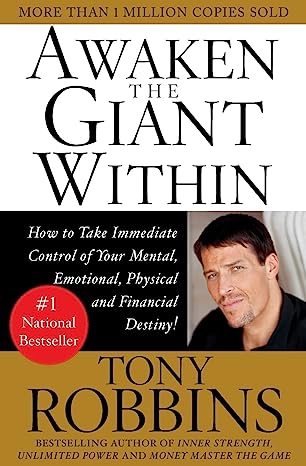
There are many people, but I’ll tell you the one that stands out for me more than anyone is Joe Polish. I don’t know how he shuts it off. I don’t think he does. While it’s fresh, he has a dear friend and someone I know dealing with health challenges. He is in a similar space that I am.
You can call us competitors; I don’t view it that way. There’s more than enough room to go around. There’s more than a piece of that pie, but many people would view us as competitors. He’s trying to connect me with him so that I can help this other person. It’s things like that.
It’s the perspective of being a networker and doing things differently. He embodies that more than a lot of other people out there. I don’t need to name-drop all the people. Try to automate everything; you are just a number. But when it comes to some of those unique interactions, Joe and Ben Hardy stand out.
A guy by the name of Howard Getson is also someone who I truly adore. He runs a high AI hedge fund. They’re dealing with people thinking, playing, and operating on a different level. As I said, it’s not difficult to differentiate yourself by doing more than the bare minimum of what others do. Those three are my top three picks.
I know Howard through Genius Network as well. I’ve signed up for his newsletter, and I am just really impressed. It’s an AI topically-focused newsletter. It’s not AI written. It’s all about AI.
You keep on the cutting edge of what’s happening regarding AI by just reading his weekly newsletter. It’s really good. What would be an example of AI used in marketing in a way that is quite novel and very effective that our listener may not have heard of or realized is even possible?
You can create an avatar of yourself. You’d have your whole body scanned, then you can AI your voice simultaneously to type out a script. Your AI avatar can then perform your script and speak it in your terminology. We’ve done it. It’s pretty cool.
It could pass if you’ve got a short video and some B-roll cut-ins. That’s one of the cool things that technology is going. I wouldn’t necessarily jump down that rabbit hole too much just yet because it’s not perfect, but that’s one of the cool things. Those tools are Synthesia and resemble.ai.
It’s cool that it’s going that way. I’ve got a couple of dozen people that work for me now. We use AI for almost everything, at least as an origination point. It’s not up to where it needs to be yet. Legal sites or some facts are wrong, and these sorts of things are wrong.
If you’re writing a video script for a landing page or a sales page, and you want to make sure you address XYZ points in XYZ past framework like problem agitate solution or whatever the framework you would like to follow, and you want to do it in the voice of a particular person, that could get you 60-80% of the way there quickly to add in your self.
These AI tools may not know who you are, but that’s okay because you can do it with someone like you. Steve Sims, Someone you know and I know, gave a great example that he’s using this as a form. ChatGPT, and these things don’t know who he is yet, but he’s a bald British guy who’s rough around the edges. He’s got a funny sense of humor. As an Englishman, there’s got to be someone else like that.
Ricky Gervais is close. He has a lot of his tone, tonality, and copy written in the tone of formality or style of Ricky Gervais. It’s using these things so you can dial in your language faster by modeling someone else who is similar to who you are. That shortcuts the time to writing or editing copy substantially faster by finding someone who resembles you. The big AI bots would know who that person is, at least. Those are a couple of examples.
The bar is set so low that it’s not difficult to have some amazing moments that truly wow people.
Yeah, I love that. Taking that example further and giving our listener some practical application. For the sake of argument, it’s Ricky Gervais that you’re most similar to stylistically. You could tell ChatGPT to rewrite a sales letter or a blog post like Ricky Gervais.
You could also use an AI tool like character.ai. It’s an interface to ChatGPT. It will take on different characters—Steve Jobs or whoever—and have it rewrite your content or give you sales or marketing tips as that person. Those are just a few practical applications someone could take away and apply to their business through their ChatGPT account.
Yup, pretty cool. It’s pretty cool stuff. It’s only going to get better from here. Businesses not using it in some capacity will be substantially disadvantaged over the next six to eighteen months. As time goes on, that gap is only going to widen.
It’s like the Internet. You look at the old newspaper ads. The Internet fad is not here to stay. Look where we are. That is what it is with AI right now.
It’s not a fad. It’s not going away. Those businesses that are not deploying it in some fashion, or at least being aware of it, will have this substantially greater gap to try and overcome as time progresses.
Yeah, and not just being aware of or theoretically familiar with AI, but the boots-on-the-ground application of AI. Playing with it regularly, carving out fifteen minutes a day to interact with ChatGPT, trying and refining different prompts, and following up after the output has been generated, asking different kinds of questions about the output.
“ChatGPT, how would you rate on a scale of one to ten the accuracy of the response you just gave me, the scientific validity of it, or the sourcing of the references?” Just getting in there and trying stuff out is invaluable. It’s not enough to read books about it or watch YouTube videos.
I 100% agree. It’s like working out. You have to work that muscle for it to grow. You can’t just will it, like, “Well, I’ll be fine showing up to the gym and getting swollen.”
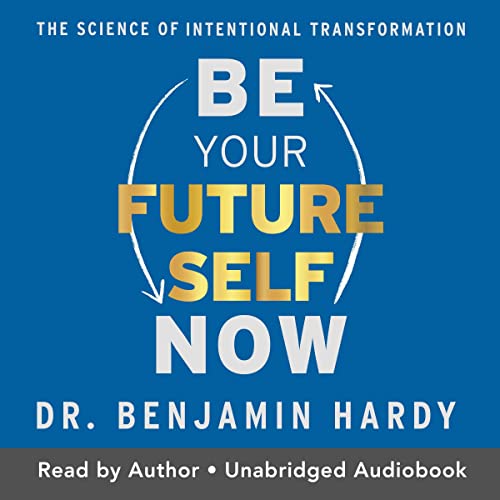
Joe Polish quipped that he’d love to pay somebody to do his push-ups, but he can’t figure out how to make that work.
Yup, 100% accurate.
Awesome. I know we’re out of time. If our listener wants to work with you and your agency if they want to learn from you and be part of your tribe, where do we send them?
There are a couple of different spots. It depends on what people need. Drayeredfern.com, you can get a hold of me there. It’s probably one of the easiest ways. I also own fractionalcmo.com, and then redfernmedia.com is the agency.
For any business that may be relevant here, recessionsurvivalguide.com will be relevant as time goes on. There are a variety of ways. It’s one of my ways that it will be one of the ideas.
One of the ways to give back is trying to make high-level solutions that a lot of the big boys and girls are using that have spent tens of thousands, if not hundreds of thousands of dollars, developing and finding a way to give that to the masses at a greatly reduced way and expensive. Try to help as many people as possible. That would be the book there and various ways I can help give back as people progress into a time of uncertainty.
One thing I learned from Kabbalah is that while certainty is not part of this physical realm, in the physical plane of existence, the only way you can get true certainty is by praying for it, and then it’s gifted to you from the upper world. Uncertainty is just part and parcel of what we’re here to experience.
Thank you, Draye. You’re up to such cool things. Again, thank you for such a powerful and inspiring story of struggle and conquering different difficulties and challenges to improve the world.
I appreciate it, my friend. Thank you very much.
All right. Thank you, listener. I hope you’re not just inspired but will take action now. We’ll catch you in the next episode. This is Stephan Spencer signing off.
Important Links
Connect with Draye Redfern
Apps and Tools
Books
Businesses/Organizations
People
Previous Get Yourself Optimized Episode
Youtube Videos
Your Checklist of Actions to Take










About Draye Redfern
 Draye Redfern is the founder of four different businesses: Redfern Media, a marketing and media agency; FractionalCMO.com, which offers marketing guidance and strategy for business owners; Ultimate Advisor Coaching, a consultancy for Financial Advisors; and BikeCar.com, a cargo bike company for families in urban cities. Draye and his unique methods have also been featured in: Forbes, Inc Magazine, AOL & Huffington Post & Psychology Today.
Draye Redfern is the founder of four different businesses: Redfern Media, a marketing and media agency; FractionalCMO.com, which offers marketing guidance and strategy for business owners; Ultimate Advisor Coaching, a consultancy for Financial Advisors; and BikeCar.com, a cargo bike company for families in urban cities. Draye and his unique methods have also been featured in: Forbes, Inc Magazine, AOL & Huffington Post & Psychology Today.







Leave a Reply